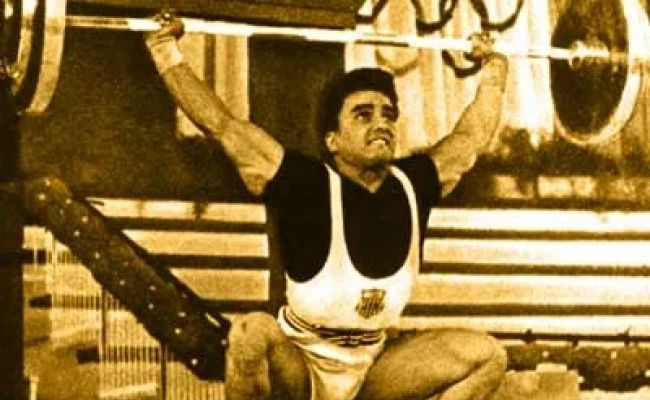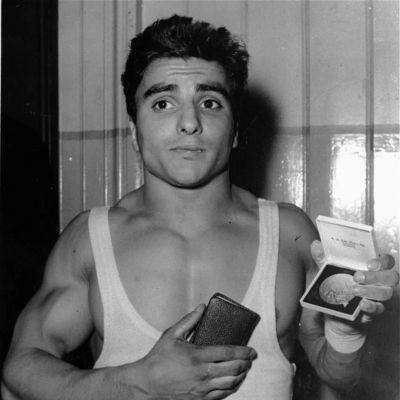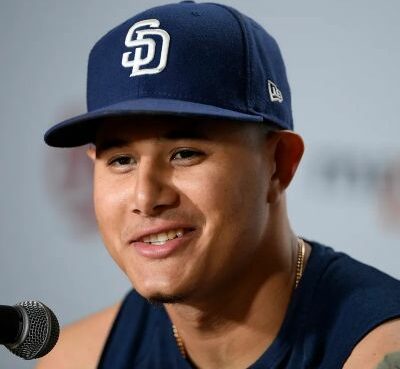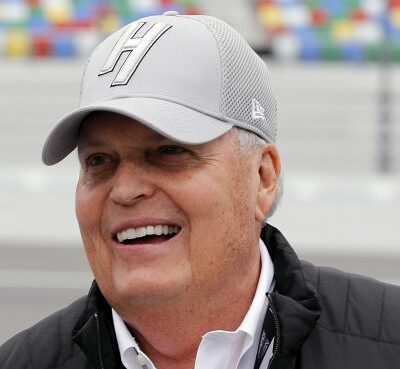Charles Vinci is a weightlifter. Charles Vinci was one of the best bantamweight fighters of all time. His best performance came in Rome in 1960, when he won the United States last Olympic gold medal in weightlifting.
Despite his diminutive size, he possessed a certain trait that distinguished him differently.
As a result, from 1954 to 1956 and 1958 to 1961, he was the national champion.
Table of Contents
Early Life and Background
Charles Vinci was born on February 28, 1933, in Cleveland, Ohio, in the United States of America.
Thomas Vinci and Marie Vinci, his American parents, are his parents.
His father was a janitor, while his mother, Marie, was a stay-at-home mother. Billy, Victor, and Angelo Vinci were Charles’ three brothers.
As a result, he had a great childhood growing up with his brothers.
As he describes it, he grew raised in a “sports home.”
However, there is little knowledge regarding her parent’s and brothers’ personal lives.
For many years, he worked as a shoe shiner in Cleveland. On the other hand, he’d have to fight for a spot on the street corners.
The relationship between Charles and his brother
Charles, on the other hand, has always been interested in fitness.
Charles reflected on how his upbringing had naturally brought his passions to the forefront.
As a result, when he was 12 years old, he began lifting a barbell that his brother Billy owned.
Regardless, Charles was unable to lift the 105-pound barbell above his waist. Bond’s was too little for his age, no matter how hard he tried.
Charles, on the other hand, would sit by his older brother’s side. He’d watch him lift weights that he hoped he’d be able to dominate one day.
Similarly, Charles and a friend go scuba diving and lift weights on a regular basis. Indirectly, this interest was provided training for him.
As a result, at the age of 14, he was able to raise it above on his first try. He also learned that he was good at it and that he enjoyed himself while doing it.
Earnings & Net Worth
Charles Vinci’s net worth is estimated to be $1 million, according to sources. His compensation is also likely to be in the millions.
He was also impressive in national, international, and Olympic competitions. As a result, his performance and victories in these tournaments reveal how good he was.
In addition, he finished first in two consecutive Olympic events. So, without a doubt, Charlie has amassed a sizable fortune throughout the course of his career.
Facts of Charles Vinci
| Name | Charles Vinci |
| Fullname | Charles Thomas Vinci Jr. |
| Nickname | “Mighty Mite” |
| Birthdate | February 28, 1933 |
| Died on | June 13, 2018 |
| Birthplace | Cleveland, Ohio |
| Aged | 89 Years Old |
| Zodiac sign | Gemini |
| Chinese Zodiac | Rooster |
| Nationality | American |
| Body type | Athletic |
| Hair color | Brown |
| Skin | Fair |
| Height | 4’11” (151 cm) |
| Weight | 123 lb (56 kg ) |
| Profession | Weightlifting |
| Category | Bantamweight |
| Major Olympic Results |
|
| World Championships |
|
| Pan American Games |
|
| Parents | Thomas Vinci & Marie Vinci |
| Siblings | Billy, Victor & Angelo (Brothers) |
| Relationship status | Married |
| Wife | Dolly Vinci Edna Vinci |
| Children |
|
| Net Worth | $1 million |
| Weightlifting Merch | Shoes, Belts |
| Last Update | June 2022 |
Professional Career
Early Steps and Y.M.C.A.
Weightlifting was something that Charles was interested in. Bond would train with his brothers’ weights whenever he had the opportunity. His first stride in his career, however, began after he finished his schooling.
In the seventh grade, he dropped out. Despite this, Charlie began training at the Central YMCA in his spare time.
At the time, he was about 15 years old.
Initially, though, he was unable to afford the membership. As a result, he used to climb the gym’s back wall.
He followed this path all the way to the back of the weight room.
His greatest problem, though, was overcoming his emotions of inadequacy. It was driven by his childhood poverty.
As a result, he began to practice every day, longer and more difficult than anyone else. Almost every weight-lifting workout in the book would be completed by him.
Long workouts aided in the development of his chest and bicep muscles.
As a result, he soon established himself as popular among the gym’s regulars. As a result, everyone admired his increasing strength and endurance.
Similarly, Charlie met Lt. Vince Ardito of the Cleveland police force and had a good time.
As a result, Vince taught Charlie how to do the press, catch, and C&J.
He eventually began to fantasize about a successful weightlifting career.
The Beginning of a Competitive Journey
During his time in the Y.M.C.A. Gym, Charles had acquired a variety of lifting techniques.
When he was around 17 years old, he finally felt ready for tournaments.
The actual date of Charles’ first competition, however, is unknown.
In the press, though, he was able to lift roughly 150 pounds. He could also lift 180 pounds in a snatch when he was only 18 years old.
As a result, he finished second in the Clean and Jerk weightlifting competition.
This was most likely his first-ever top finish in a major tournament.

Similarly, the Junior Nationals were held in Cleveland in 1953, and Charles was eager to compete.
With lifts of 190 lb. press, 180 lb. snatch, and 225 lb. C&J won the tournament.
Despite this, Charles continued to practice and improve over the next year.
In 1954, he went to Indianapolis to compete in the National Championships.
Charles won the first of his seven National Championships with lifts of 190-190-240.
Ascension to the top
Charles was inspired by his victory at the national competition. So he worked even harder over the next three months.
Then, in 1955, he went to Boston to compete in an open meet at the Boston Y.M.C.A. Charles eventually set his first American Record with a 260-pound C&J lift. He’d put on 675 pounds.
For Bond, it was his most successful event. He was called a month later.
As a result, he was selected to compete at the Pan American Games in Mexico City.
It was meant to be his first time competing on a global stage.
Regardless, his performance was outstanding. At the competition, he won the Gold Medal.
On his fourth effort, he achieved a new world record in the snatch with 223 lb.
He also competed in the National Championships only three months later. He also dominated this competition.
First, he set a new national record by gaining 690 pounds in total. On his fourth attempt, he cleaned and jerked 271 14 lb for a new national record in the C&J category.
Over time, he maintained his excellent form. Charles also achieved a new record by lifting a total of 710 lb. for the first time.
He accomplished this accomplishment at Norfolk, Virginia’s famous Colonna’s Picnic.
Charles, the Iron Hands, had a fantastic run of games.
As a result, he was selected for the national squad to compete at the 1955 World Championships in Germany.
Despite this, he returned on his fourth effort to clean a world record of 132.5 kg.
With this lift, he placed second at the World Championships in Munich.
Even by today’s standards, Charles put in incredible strength training here.
As a result, his 1956 Olympic year got off to a tremendous start.
The Road to the Melbourne Olympic Games
His victory at the national competition inspired Charles. So he worked even harder over the next three months.
Then, in 1955, he went to Boston to compete in an open meet at the Boston Y.M.C.A. Charles eventually set his first American Record with a 260-pound C&J lift. He’d put on 675 pounds.
It was meant to be his first time competing on a global stage. Regardless, his performance was outstanding. At the competition, he won the Gold Medal.
Over time, he maintained his excellent form. Charles also achieved a new record by lifting a total of 710 lb.
for the first time. He accomplished this accomplishment at Norfolk, Virginia’s famous Colonna’s Picnic.
He then did a rigorous curl of 155 pounds at a weight of 132 pounds. He also performed a 300-pound bench press, demonstrating his stamina and strength.
Success at the Melbourne Olympics
Going into the 1956 Olympics, Charles had all the momentum he needed.
He did, however, have an issue before the start of the Olympics. Charles weighed seven ounces too much.
Despite his best efforts, he was unable to reduce his weight. Finally, he had a haircut to get rid of his thick, long hair and get in shape.
On November 24, 1956, Charles competed in the Olympics. He was up against Soviet Union’s Vladimir Stogov.
In 1955, Stogov defeated him for the World Championship.
Regardless, since the game at the Royal Exhibition Building, they have been famous rivals.
The “war of muscles and nerves” was the name of this Olympic event.
In the Olympics, Charles won his first gold medal. On his third attempt, he also achieved a new Olympic world record.
Olympic Games in Rome
His journey to the Rome Olympics was paved with victories in a variety of events. In a three-part invitational versus the USSR squad, he finished second.
In addition, at the World Championships in Stockholm, he placed second with 327.5 kg.
Charles pushed himself to train harder in the hopes of winning a second Olympic medal.
He was the overwhelming favorite for the Olympics in Rome, and he delivered.
As a result, he lifted 345 kilograms to win the gold medal. For his weight category, it was a new Olympic and World record.
Setbacks & Retirement
Charles won the Nationals for the second time and added 785 pounds to his weight at the World Team Trials.
At the Worlds, though, he battled and finished fourth with 327.5 kilograms.
However, due to personal problems, Charles was unable to train and compete in 1962 and 1963.
Nonetheless, he was preparing for the 1964 Olympic Games.
Regardless, his coaches observed a drop in his performance. As a result, he began intensive training.
As a result, he tore a significant ligament in his back and could not play.
Experts in the field of weightlifting believed he had reached the end of his career. Charles, on the other hand, had one more surprise in store for them.
As a result, in December of 1965, he joined a tournament in Ohio.
Then, with lifts of 280-230-295, Charles officially surpassed 800 lb. for the first time.
In this event, he also set a new American record. Finally, he retired from competitive sports for good.
Marital Status
Charles Vinci had two marriages. After winning the 1956 Olympics, Charlie met his first wife.
Dolly Vinci was her name, and she aided Charlie in furthering his profession.
After they married, they had a strong bond, and everything went smoothly.
Dolly would assist him in loading barbells into the crane he worked for. As a result, he was able to train while he wasn’t working.
His first wife, on the other hand, died young due to health issues.
However, there is no precise information about how she died.
Eventually, Charlie married his second wife, Edna Vinci. Regrettably, she died in 2016 and is no longer alive.
When writing this article, his lineage is survived by three sons, Curt, Carl, and Chris.
Doreen and Sarah, Jennifer Sheldon, and Dawn Cook are his four daughters.
He has four granddaughters, one great-grandchild, and brothers, as well.
Age, Height, and Weight
At 4 feet 1 inch Charles Vinci is one of America’s most decorated weightlifters. Similarly, he weighed in at around 56kg on a regular basis.
But, depending on the competition’s standards, he’d go high or low.
Similarly, he needed to keep his weight in line with the category in which he wanted to compete.
When he was 72, only a few of his fans got to meet him.
He was in good form, though, and as firm as a rock.
He also told them that he still worked out three times a week for several hours.
Also read: Kadeem Hardison, Sheree Wilson, Shannon Reilly
Death
His professional loss was not the only setback he had to deal with in his life.
At the age of 69, he had to have a complete heart bypass surgery.
Plaques clogged the arteries leading to his heart in 2002, and he died.
While still in the hospital after his surgery, he did push-ups and squats.
He, too, had to have a heart valve removed at the age of 79.
His physicians told him, however, that his heart was not strong enough to pump blood throughout his body.
As a result, at the age of 85, he died of congestive heart failure.




